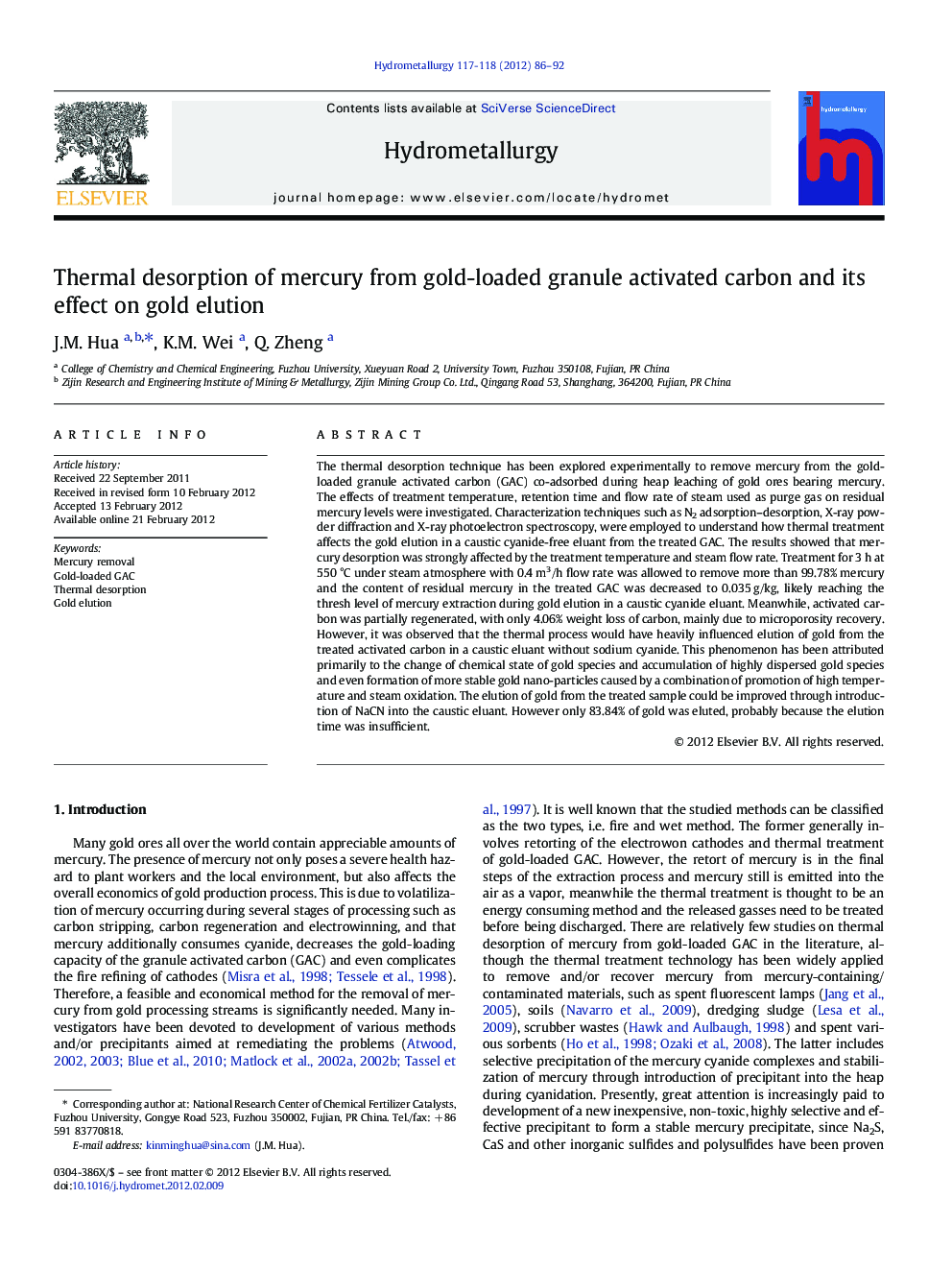| Article ID | Journal | Published Year | Pages | File Type |
|---|---|---|---|---|
| 212548 | Hydrometallurgy | 2012 | 7 Pages |
The thermal desorption technique has been explored experimentally to remove mercury from the gold-loaded granule activated carbon (GAC) co-adsorbed during heap leaching of gold ores bearing mercury. The effects of treatment temperature, retention time and flow rate of steam used as purge gas on residual mercury levels were investigated. Characterization techniques such as N2 adsorption–desorption, X-ray powder diffraction and X-ray photoelectron spectroscopy, were employed to understand how thermal treatment affects the gold elution in a caustic cyanide-free eluant from the treated GAC. The results showed that mercury desorption was strongly affected by the treatment temperature and steam flow rate. Treatment for 3 h at 550 °C under steam atmosphere with 0.4 m3/h flow rate was allowed to remove more than 99.78% mercury and the content of residual mercury in the treated GAC was decreased to 0.035 g/kg, likely reaching the thresh level of mercury extraction during gold elution in a caustic cyanide eluant. Meanwhile, activated carbon was partially regenerated, with only 4.06% weight loss of carbon, mainly due to microporosity recovery. However, it was observed that the thermal process would have heavily influenced elution of gold from the treated activated carbon in a caustic eluant without sodium cyanide. This phenomenon has been attributed primarily to the change of chemical state of gold species and accumulation of highly dispersed gold species and even formation of more stable gold nano-particles caused by a combination of promotion of high temperature and steam oxidation. The elution of gold from the treated sample could be improved through introduction of NaCN into the caustic eluant. However only 83.84% of gold was eluted, probably because the elution time was insufficient.
Graphical abstractFigure optionsDownload full-size imageDownload as PowerPoint slideHighlights► Mercury removal from the gold-loaded activated carbon through the thermal technique. ► The appropriate treatment for 3 h at 550 °C at the steam flow rate of 4 m3/(h·kg). ► The activated carbon was ca. 60% regenerated due to microporosity recovery. ► The dispersion and chemical state of gold species will affect its elution behavior. ► The aggregated gold particles can be effectively eluted through addition of cyanides.
